Albuen
The long crook, the elbow, is something special. There's a special light that changes from morning to night and you're surrounded by sky and sea. The Albuen is also home to magnificent scenery and a unique cultural environment that bears witness to hundreds of years of human activity.
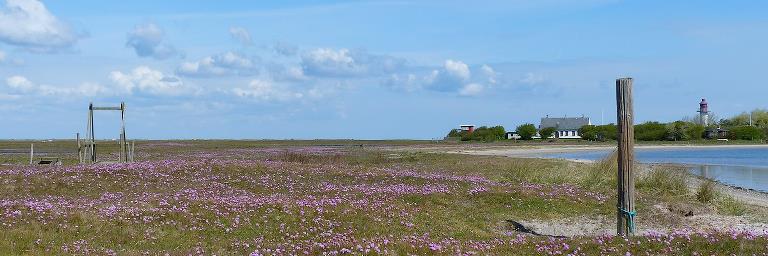
Landscape
At the far end of Nakskov Fjord lies the narrow 7.5 km long Albuen. It separates the Langeland Belt from Nakskov Fjord and provides a haven for birds, fish and people. The shelf is quite low, created by sand and stones brought here over thousands of years.
Albuen is a very special area with beautiful scenery and a cultural environment that bears witness to 600 years of human activity in this desolate place.
Beach lakes and the low embankments, called seawalls, bear witness to the geological formation of Albuen.
Few trees and shrubs grow here to provide shelter, so visiting the site in windy conditions can be a harsh experience, but the light from the shallow fjord and deep belt always offers something special.
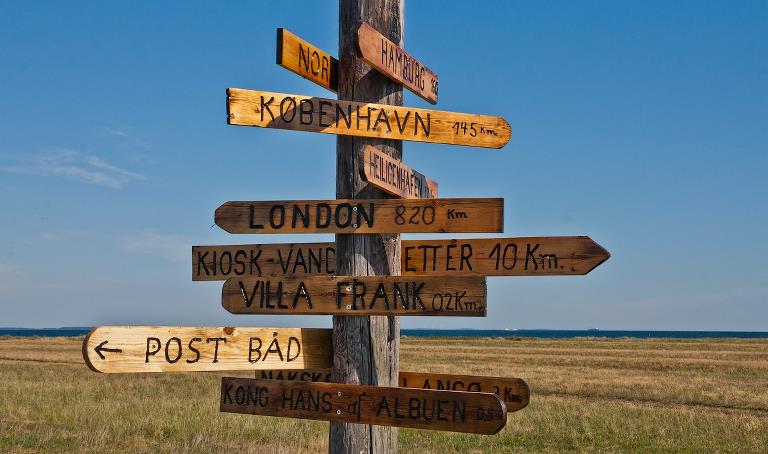
Nature and the cultural environment
Birds are abundant and in May - June, on warm and quiet evenings or sometimes during the day, a strong chorus of the rare beach toads can be heard. Ronnie Bille has been kind enough to provide several sound recordings of toads and frogs. You can listen to his recording of Albuen's chorus of toads by clicking on the link below.
When the angel grass, yellow snowdrop or white yarrow are in flower it is particularly beautiful. Then large areas turn pink, yellow or white respectively. English grass flowers from mid to late May, in the first half of July the yellow snowdrop can be seen and smelled and if the summer has been wet, the yarrow can be seen in August.
Low embankments and depressions in the ground bear witness to the herring season in the middle of the Middle Ages, when people from near and far came to the Albuen to trade and buy salted herring.
It is of course illegal to use a metal detector in the protected area of herring stalls.
Large and small houses built within the last 100 years date from a time when many people moved to the Albuen. Here you can see fishing houses, a pilot house, a lighthouse, a school and a coastal lookout. In the first half of the last century, the Albuen was really alive. Fishermen caught plenty of fish, helped by fisherwomen who set worms on hooks and provided children, clothes, food and shelter. The pilots had busy days making sure the ships got back and forth to Nakskov along the winding shipping lane.
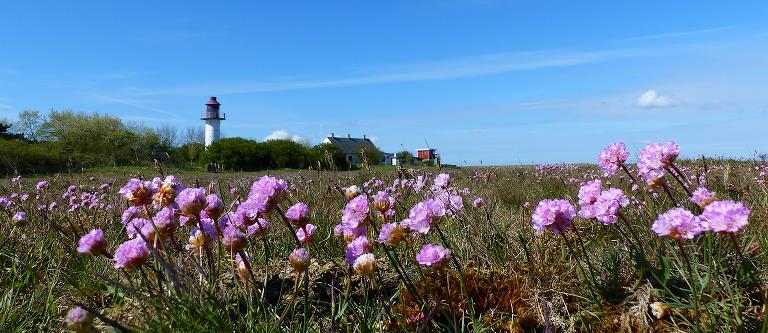
The children went to the small Albue school, where the teacher taught them to write beautifully and add up numbers.
Fishermen and pilots looked after the lighthouse and had side jobs as watchmen in the coastal lookout, recording passing ships and the first lark of the year in the log.
When it stormed and ships ran aground, the Albue Bear Guild moved out to rescue crew, ship and cargo.
The Albue has earned its own leaflet, but unfortunately it has not been reprinted, so today it is only available as a pdf file. The nature guide can also talk for hours about the Albuen.
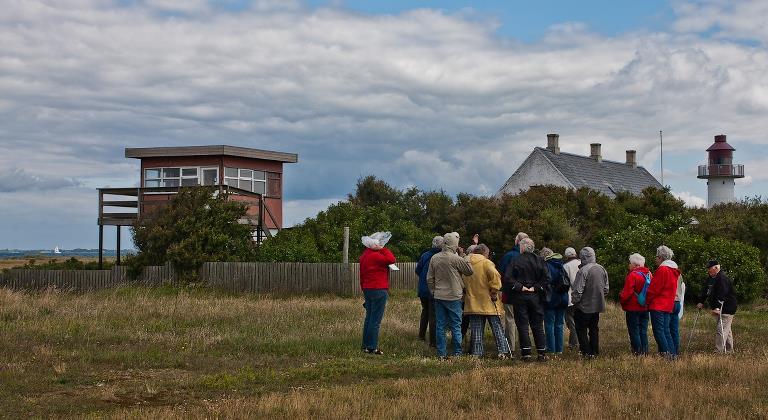
Practical
You can walk to Albuen along the narrow pier - it is 6 km to the lighthouse. However, as the walk is a bit tough, most people choose to go there by one of the turbo boats or to go out and walk home. Either way, going to Albuen is always a wondrous experience because the land is so low that from a distance it looks like the little houses are floating on the water.
The state owns the central part of the Albuen. The rest is privately owned. On the state land there are tables, benches and barbecue areas. At the lighthouse there is a toilet without water, as there are no drinking water wells on Albuen. The coastal lookout is always worth a visit. It is open all year round, so you can enjoy your packed lunch in the dry while enjoying the magnificent view.
The large white Lodge is also owned by the state, but is used by the Friends of the Lodge as a combination museum and nature centre, offering overnight and long-term stays in this beautiful place. You are welcome if it is open otherwise be considerate if there are residents in the house.
There are no rubbish bins at Albuen, as the rubbish collector has a little difficulty getting there, so please take your rubbish back.
Please bring drinking water for the trip. There is only rainwater at the Albuen.
Click on the picture below to see the gallery from the Albuen.
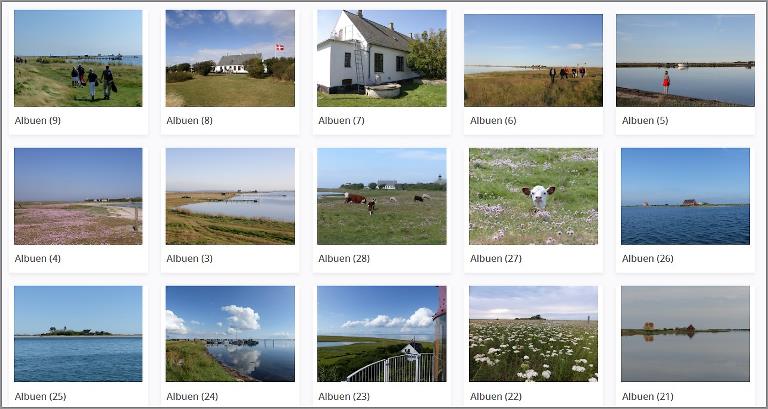
Discover the Albuen with the app Naturlandet Lolland-Falster
You will find the route under Nature parks and nature areas - Nature park Nakskov Fjord - Routes - Out on the Albuen.
Here all the small and big sights are marked, so you can find and read more about Santa's hole, the Watch, The old lighthouse, The school and much more.
